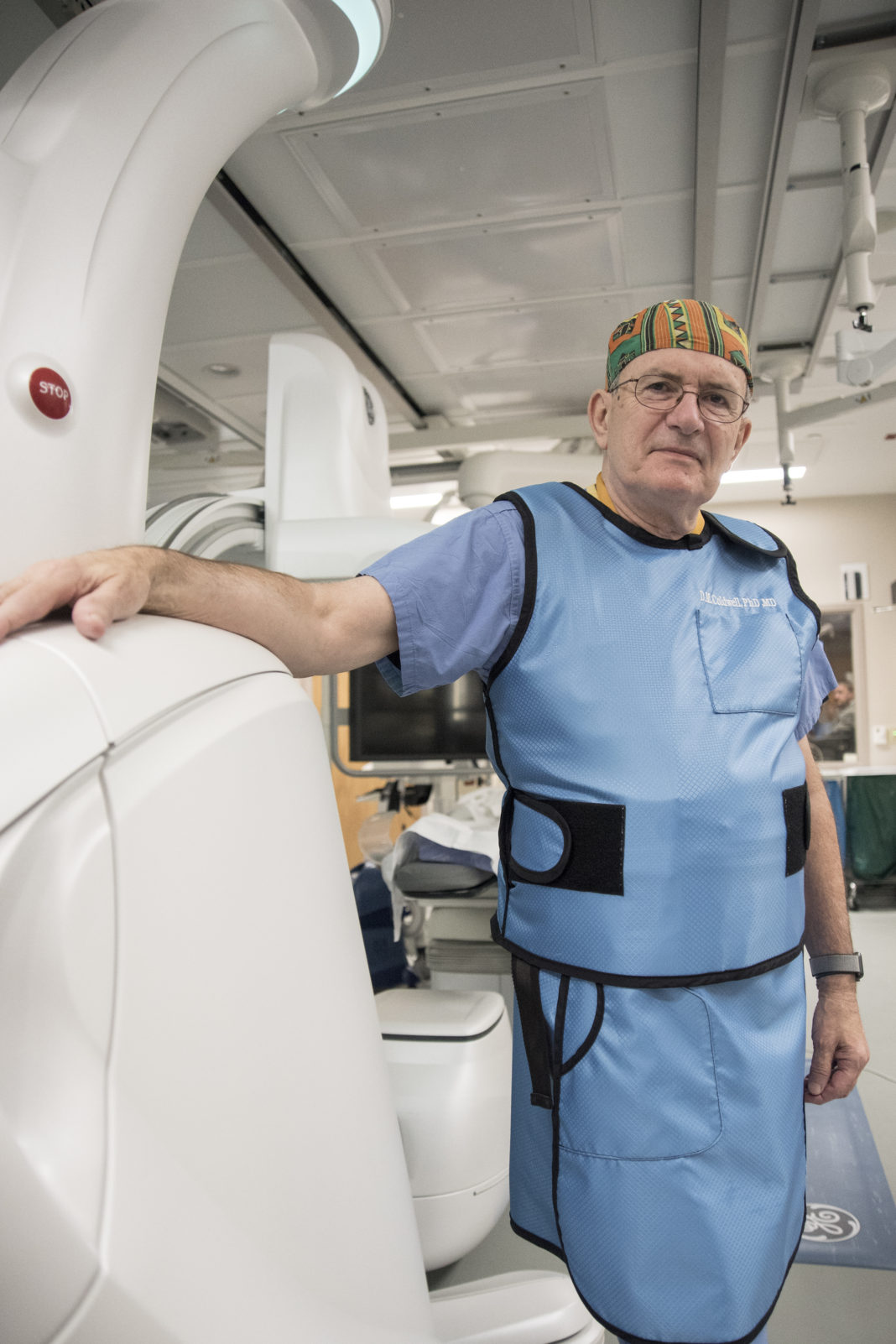
University of Louisville Hospital is the first in the region to install and use a new imaging system that is more accurate, faster and safer than traditional units.
“This is the most advanced piece of arteriographic equipment in the world at the moment,” said Douglas Coldwell, M.D., Ph.D., director of vascular and interventional radiology and interventional oncology at UofL Hospital and a professor of radiology and bioengineering at the UofL School of Medicine. “And we are the only ones to have it in this area. This really is a big deal.”
The Discovery IGS 740 provides exceptionally detailed, 3-D images in real time of patient anatomy, which Coldwell said is invaluable in trauma cases. Doctors can accurately determine the site of bleeding and close it off, saving lives.
He said Discovery’s laser-guided tools give doctors the ability to be much more precise in treatment.
“With this new system, we’ve taken a leap forward in patient care in this community and region,” Coldwell said.
With its unique mobile platform, the Discovery has the power and capability of traditional fixed imaging units, but rides on the floor, moving around the patient as necessary, free of interference from fixed floor or ceiling structures. At the touch of a button on bedside controls, doctors can use its laser guidance mechanism to precisely position it just about anywhere for the best possible images of parts of the anatomy. It can then be moved aside so medical professionals can work efficiently and have unobstructed access to patients.
Its exceptionally high-quality images allow doctors to perform delicate procedures such as blood vessel interventions with accuracy and confidence, Coldwell said.
“It allows us to get in, treat a patient and do it without complications, and have a better patient outcome,” he said. Even arteries can be looked at in 3-D, allowing doctors to “plan exactly where we’re going to go in treatments,” such as for stent and angioplasty.
Its large digital detector also gives doctors the ability to see more in a single exam with fewer X-ray images, and fewer injections of contrast dye, and carries just a fraction of radiation of traditional units, making it much safer for patients and staff.
“Everyone is concerned about radiation,” he said. “With this equipment, we get 1/10th to 1/100th of the radiation of other units.”
The Discovery unit’s precision makes it perfect for use in patients at the UofL Brown Cancer Center.
“It allows for amazingly targeted radiation,” Coldwell said.
Tumors can be treated by injecting radioactive beads the size of talcum powder particles into them via arteries. “This requires precise placement, which we can do with the Discovery system,” Coldwell said. “A very high dose of radiation can be given to the tumor, while sparing the surrounding tissues. That means fewer side effects for patients.”
The equipment has its own dedicated room at the hospital. Mike Goode, the hospital’s director of imaging and neurodiagnostic services, said installation was finished last month at a cost of around $2 million, including precision leveling of seamless floors to hold the sensitive, heavy equipment, which took nearly a month.
Doctors have been seeing patients with the system for a few weeks, and the difference is profound, Coldwell said.
“We’re pretty excited about it,” he said. “It’s a game-changer.”




























